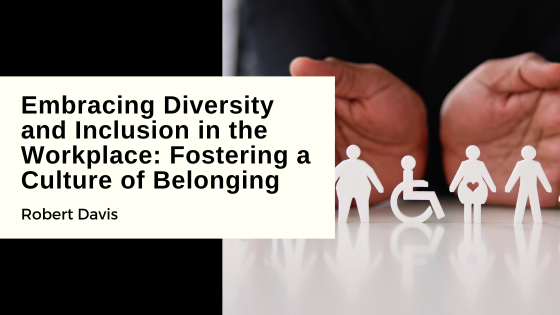In today’s rapidly evolving global landscape, the significance of diversity and inclusion (D&I) in the workplace cannot be overstated. Beyond mere buzzwords, fostering a culture of belonging is a transformative journey that not only celebrates differences but also integrates them into the core values and practices of an organization.
Diversity encompasses an array of dimensions: race, ethnicity, gender, age, sexual orientation, abilities, backgrounds, and more. In contrast, inclusion involves creating an environment where everyone feels valued, respected, and heard. It’s not merely about having a diverse workforce but ensuring that each individual feels a sense of belonging and can contribute authentically.
An inclusive workplace isn’t just a morally sound choice; it’s a strategic imperative. Diverse teams drive innovation by bringing together varied perspectives, experiences, and ideas. They are more adaptable, better at problem-solving, and capable of understanding a broader customer base. Studies consistently show that companies embracing diversity outperform their peers, both financially and in terms of employee satisfaction.
To build a culture of belonging, organizations need more than just policies and initiatives. It requires a holistic approach starting from the top leadership, trickling down through every level of the company. Leaders play a crucial role in helping to set the tone, championing diversity initiatives, and embedding inclusion in the organizational DNA.
Training programs focused on unconscious bias, empathy, and cultural competence are essential tools for nurturing an inclusive workplace. Such programs raise awareness, challenge assumptions, and equip employees with the skills to navigate diverse interactions respectfully.
Creating employee resource groups (ERGs) or affinity groups is another effective strategy. These groups are able to offer a safe space for individuals with shared identities or interests to connect, support each other, and advocate for inclusive policies. They provide a platform for authentic conversations and initiatives that drive positive change within the organization.
Furthermore, fostering inclusivity involves not only embracing differences but also ensuring equitable opportunities. Companies need to evaluate their recruitment, promotion, and retention practices to mitigate biases and create a level playing field for all employees.
A culture of belonging also necessitates a zero-tolerance policy towards discrimination and harassment. Open communication channels, anonymous reporting systems, and a commitment to swiftly address concerns are vital in creating a safe environment for all.
Ultimately, the journey towards inclusivity is ongoing. Regular assessment, feedback mechanisms, and a willingness to evolve are crucial. Organizations must continuously reassess their practices, gather feedback from employees, and adapt strategies to meet evolving needs.
Embracing diversity and fostering inclusion in the workplace isn’t just a checkbox; it’s a commitment to creating a culture where every individual feels valued, respected, and empowered to bring their whole selves to work. By nurturing a sense of belonging, organizations can unlock the full potential of their diverse workforce, driving innovation, growth, and creating a workplace that thrives on the richness of its differences.
